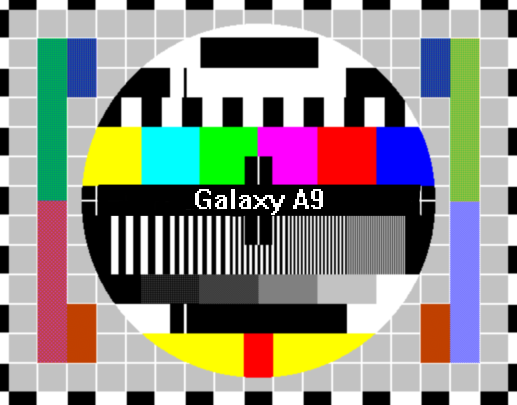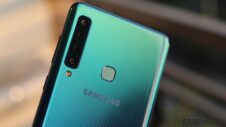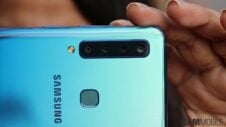A new year, and a new Galaxy series. This year, Samsung released the Galaxy A 2016 edition of devices, and we recently went through the Galaxy A9's display to see how it measures up.
The Galaxy A9 is the largest phone in the A series, so let's find out what its screen brings to the table. We have measured the screen in the mode that is comes with out of the box, which is Adaptive display.
We have also measured Basic mode, which is supposed to be the most accurate, and also the mode that we liked best: AMOLED Photo.
If you want to know what the graphs in this measurement mean, please refer to this post.
First, some basic stuff. The Galaxy A9 sports a 6-inch Super AMOLED display with Full HD (1920×1080 pixels) resolution and a pixel density of around 367 PPI. It rocks the infamous Diamond PenTile pixel layout, which you can see in the close-up picture below.

Brightness Levels
First things first, the screen has a maximum brightness of around 466.61 cd/m2 (nits) in manual brightness setting, and 700.99 cd/m2 in auto brightness. At the most dim setting, the screen can go as low as 2.20 cd/m2 in auto brightness mode, and as low as 2.20 cd/m2 in manual brightness.
What this means is that this is an excellent screen for this type of phone, and you can read the display easily in bright sunlight and not strain your eyes in dark conditions.What really surprised me is the amount of brightness it produces in auto brightness mode – 700 cd/m2 is really a lot!
Adaptive Display 
When we look at its color gamut and the colors in the sRGB color space, we can conclude that every color misses its target point and the screen is thus oversaturated (a common theme on AMOLED displays). The white point is pretty much off target which you can see in the graph on the right side below. The margin of the displayed primary and secondary colors isn’t that good, with a Delta E error of 7.2 being too high, which is something we see all the time in this screen mode. 
The error of the Grayscale color is not too great at 5.4 and the whites are blueish here as well; that is something manufacturers do to make the whites look more white, especially on AMOLED displays. The contrast ratio, however, is unmeasurable so that is extremely good. Blacks are really black, yet when we get to the lighter colors we see that blueish tint popping out. This is something you can see at the color temperature as well, with a temperature of 7459 being too cold (and 6509 is the sweet spot).
Basic Mode

As we have said in the past, we aren't a fan of Adaptive mode (though some of us don't exactly mind using it), but we have the option of changing it to Basic mode. The basic mode is the closest you can get to a nicely calibrated screen, though the display can look a little dull when you first lay your eyes on this screen mode. In the sRGB color space it scores great as it hits most of the targets, with the margin of the displayed primary and secondary colors having a Delta E error of 2.3 which is good. The white point is just a little off center, but nothing to make you worry about.

It’s a similar story in grayscale, although it boosts red a little too much which results in a warmer feeling screen and that is something you can see at the color temperature as well. With a color temperature of 6361 it is a lot closer to 6509, which would be the best score. The margin of color error in Grayscale of Delte E 3.0 is good but not better than other Basic Modes we measured; for example the Galaxy A8 had a Delta E of 1.5 in the Grayscale color error.
AMOLED Photo
The mode I always set my screen to is AMOLED Photo, this gives you the punchiness of the Adaptive Display mode without making it feel to much. Funny detail here is that the Grayscale color error is just a tad better than the basic mode. A first timer for any of the screens that we have measured until now! Color temperature is almost the same as basic mode, and contrast ratio is just as good as the others.
Conclusion
The Galaxy A9 surprised me with its brightness levels in automatic mode, hitting 700 cd/m2, which is insanely bright. The screen is very good and we hope Samsung continues to lead the pack with their screens, especially on non-flagship phones.
Only, the screen isn't calibrated as good as the Galaxy A8, this is something I find very odd. Usually the newer screens get better and better calibrated but that wasn't the case here. It is still an awesome screen, don't get me wrong, yet I had hoped for a notable improvement over last year's displays.
All in all though, I really love this screen and it makes this phone an awesome media consuming device, which is the whole point of a 6-inch display!












